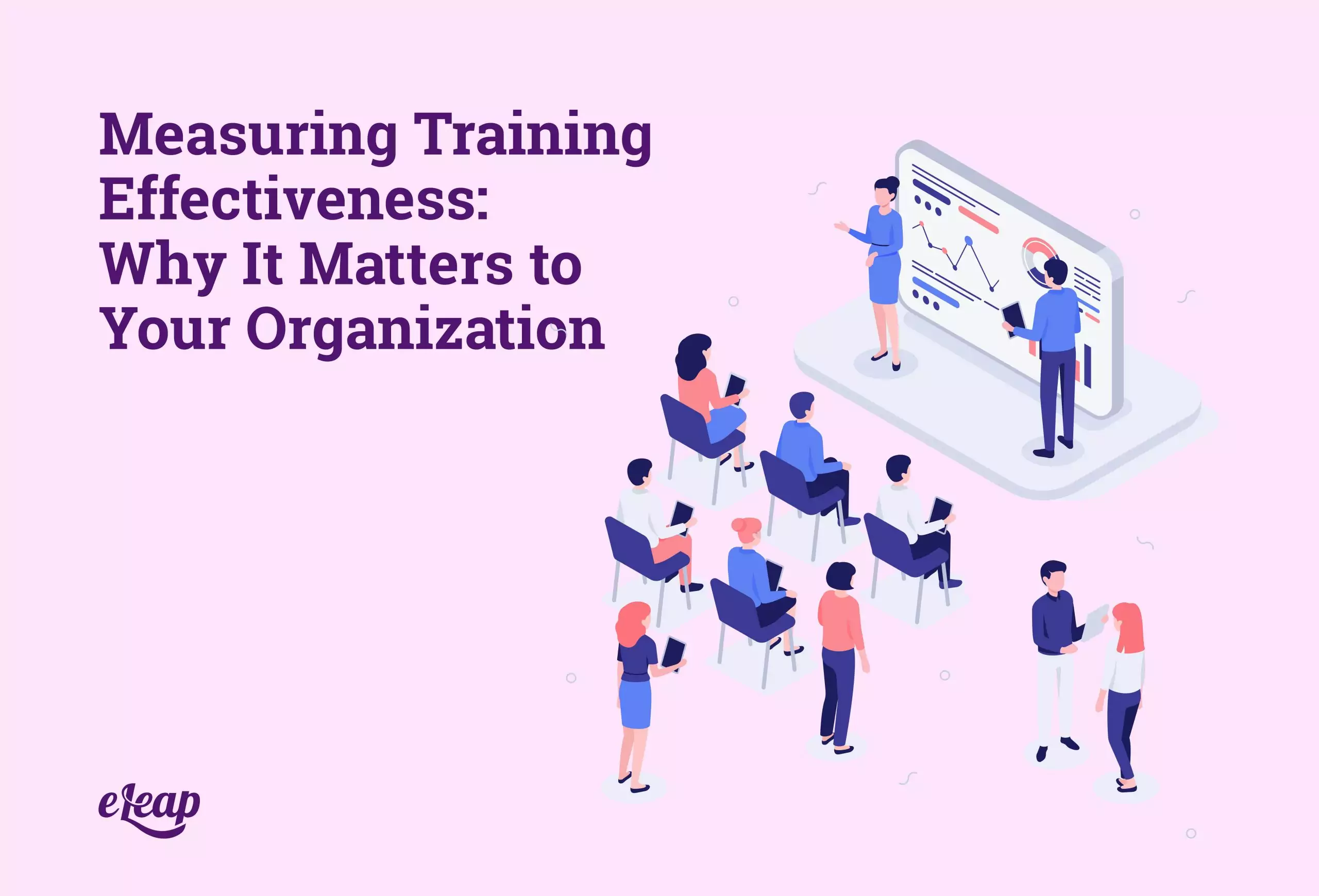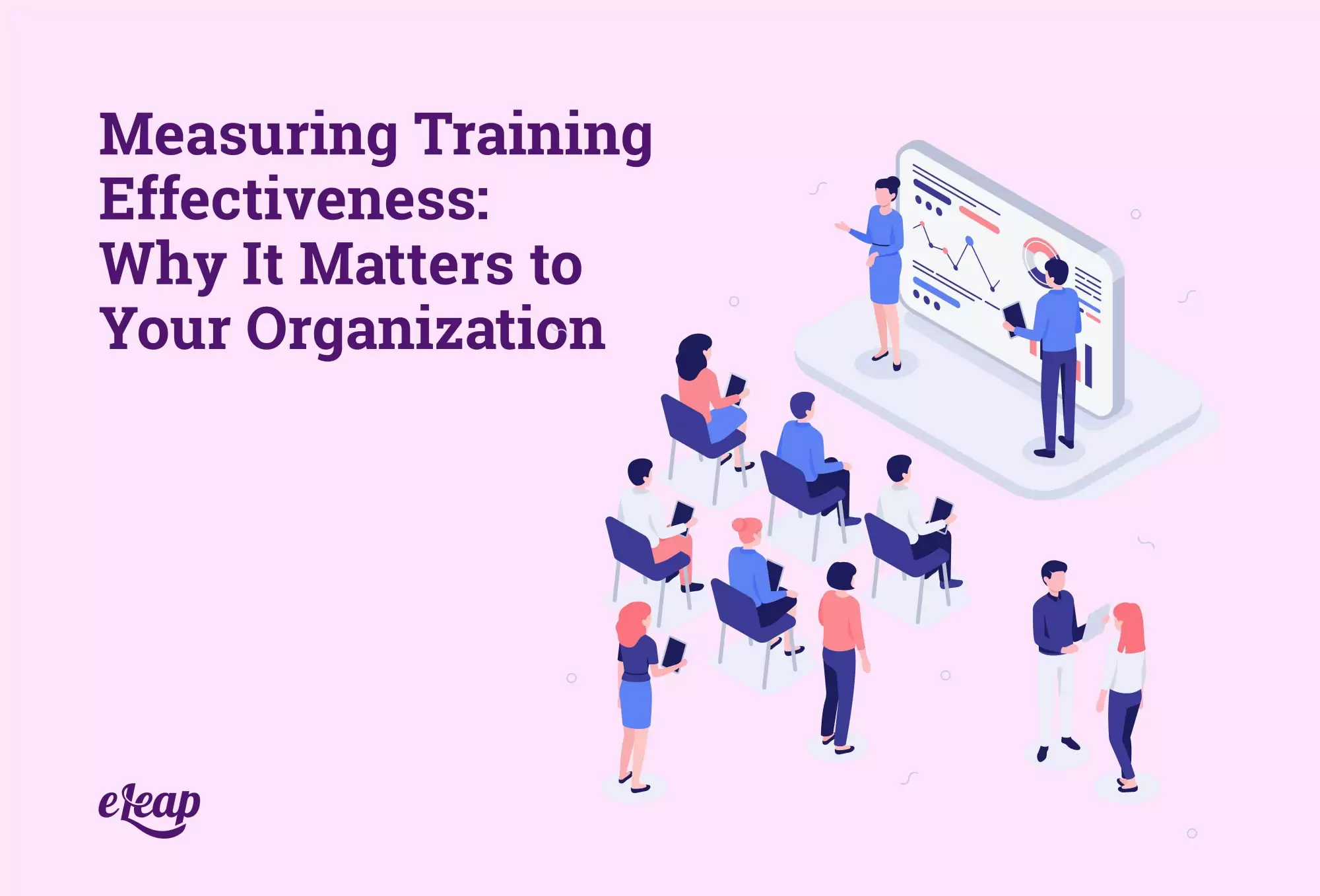Measuring Training Effectiveness: Its Importance

Training effectiveness is an important tool to grow your employees. Most organizations today understand the importance of providing training for employees. This can take place during the onboarding process, be provided to close skills gaps, offer employees a path forward in their career, for legal compliance, and many other reasons. However, if you are not measuring the effectiveness of your training, you could be simply throwing money and time away.
Without an accurate understanding of your training program’s effectiveness, it is impossible to determine whether your employees are actually learning, developing, and growing. You cannot measure the return on your investment, predict organization performance and success, or even determine whether your employees will stick around or jump ship in search of a better option.
As you can see, measuring training effectiveness is important. It also delivers some pretty important benefits that are relevant for organizations in any industry or vertical. In this post, we will discuss the benefits offered to help you understand just how important it is to continue measuring training effectiveness.

Accountability
Without ongoing measuring and assessments of L&D efforts, accountability falls by the wayside. Both trainers and trainees need to be accountable for their roles in producing the desired results. By regularly assessing the effectiveness of your program(s), it becomes possible to identify breakdowns and hold those responsible accountable.
Note that this isn’t to take punitive action, but to address misunderstandings or other challenges that created the problem in the first place. Both trainers and trainees want to uphold their responsibilities. Sometimes it just requires a little work to get them where they need to be. Without those regular assessments though, accountability goes out the window.
Course Correction
Your L&D programs should be designed to produce specific results. For instance, one course should improve customer service, while another should improve service or product quality. Without regular assessments, though, you have no way of knowing if you’re actually reaching those goals and making the necessary course corrections.
With regular assessments, it becomes possible to not only spot problems, but hone in on the underlying causes. With that information, you can then make changes in real-time and achieve meaningful improvements, whether that’s in terms of outcomes, inputs, or some other metric. The point is, without ongoing training assessments, you lack the required visibility into training and program results to make informed decisions. That leaves you guessing at the causes, effects, and proper course of action, and guesswork is never a good foundation for corrective action.
Employee Retention
A robust L&D program helps make employees feel more emotionally and mentally connected to the organization. A well-trained, involved employee is more productive, more engaged, more efficient, and also more likely to stay with the employer. One of the primary reasons for leaving an organization is a lack of upward mobility, as well as a lack of support through employee training and development options. If you are losing employees, there’s a good chance that your training is ineffective.
Improved ROI
Training should be all about ROI – the return on your investment must be measurable and meaningful. If your training is ineffective, your ROI will be minimal at best. Better training results in increased ROI, it’s as simple as that.
With the right investment in training, you can boost productivity, profitability, customer satisfaction, employee retention, and other success-related metrics. By continually measuring training effectiveness, you can also balance projected ROI versus actual ROI. Also, make adjustments as necessary, and drive greater value for the organization and all stakeholders.
Better Ability to Compete
Finally, effective training increases your ability to compete. Today’s business world is increasingly competitive and most organizations cannot afford to sacrifice a single advantage. Training ensures that your team members are the most powerful advantage you possess.
It’s not just about improving their capabilities or knowledge, either. It’s about driving desired outcomes. Trained employees are more effective and better able to achieve your goals, including improved service or product quality, better customer service, and more. All of that speaks to brand perception and value, which improves your ability to compete, keep your brand at the forefront of your customer’s minds, and more.
How to Evaluate Effectiveness
As you can see, measuring training effectiveness is critical. How do you go about doing that, though? It can be challenging, but some key elements will let you hone in on effectiveness. (download free eBook with tips on how to assess the effectiveness of your training)
Measure with KPIs
To measure training effectiveness is to ensure that you are using the right key performance indicators (KPIs). Note that KPIs can and will vary from organization to organization, so you must take a deep dive into your organization, define relevant KPIs, and then use them. Some commonly used KPIs include:
- Improved employee engagement
- Increase in monthly sales calls
- Improved sales for specific products
- Improved monthly customer satisfaction ratings
Assess While Training
While you cannot fully assess effectiveness during training, it is important that you check-in with employees periodically. This could be at random points, or it could be at strategic junctures – the transition between modules, for instance. Learner surveys and questionnaires can shed light on the effectiveness of training, the overall trainee experience, and other important areas. However, make sure that you act on employee feedback. Ignoring it or chalking complaints up to employee idiosyncrasies tells your trainees that you don’t value what they have to say.
Assess Retention
Another important way to measure training effectiveness is by assessing information retention. This is often done with a quiz at the end of the module, but it can be misleading. After all, it’s not the information retained at the end of the session that matters, but what the employee retains and can apply in their daily responsibilities down the road. Observing employee actions and decisions after training, having check-ins, and even surveying them several weeks later can all help ensure accurate measurements.
Adopt the Right Model
Training effectiveness can be challenging to measure no matter the size of your business or your industry. One option is to use the Kirkpatrick Model, which helps you assess training, delve into behaviors, and connect everything to desired results and predicted ROI. The right learning management system (LMS) is also critical – the eLeaP system offers agility, flexibility, and the opportunity to dive into the most meaningful metrics while tracking learner progress.